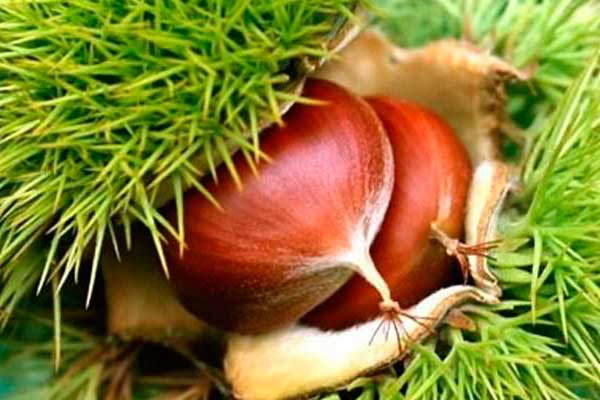Study: Chestnuts – resistant starch in weaned piglets

Researchers in Portugal studied the use of chestnuts (castanea sativa mill) as a source of resistant start in the diets of weaned piglets.
A group of 24 piglets, with a mean weight of 6.11 kg, were divided into groups of 8 and placed on three experimental diets. The starch content of the experimental diets was 39% consisting either of 100% wheat starch (CD), 50% wheat starch and 50% chestnut starch (CN50) or 100% chestnut starch (CN100).
The piglets received these diets for 35 days. Total tract apparent digestibility (TTAD) was measured when piglets were aged 32–39 days and 46–53 days. Afterwards, the animals were sacrificed, their gastrointestinal compartments weighed, and the contents of their caecum and colon collected.
Diet did not influence the feed intake or growth rate of the piglets, but had a significant effect on their feed conversion ratio which was 1.27, 1.30 and 1.37 for diets CD, CN50 and CN100, respectively (P=0.042). Piglets receiving the CN50 diet exhibited lower faecal scores compared to CD and CN100 groups (χ2 = 39.31, P<0.001). There was a trend (P=0.067) towards an increase in the TTAD of dry matter (DM) in the two chestnut-containing diets, but only when piglets were younger (32–39 days).
The TTAD of crude protein (CP) was decreased (P<0.001) in CN100 group relative to CD and CN50 groups, independently of age. Relative to the CD group, the coefficient of TTAD of NDF was increased by 0.18 units in the CN50 group and 0.25 units in the CN100 group, when the piglets were aged 32–39 days. These differences were reduced to 0.09 and 0.17 units, respectively, when the piglets were aged 46–53 days.
There were tendencies (P<0.10) towards increases in the full and empty weights of the large intestine in CN100 group. Moreover, diet had no significant effect on villus height and width. In the jejunum, crypt depth was reduced in CN100 group (P=0.006), while the villus height:crypt depth ratio was increased with the CN50 and CN100 diets (P=0.018). Diet had no significant effect on DM and pH of the caecal or colonic contents. In the caecum, the concentration (mmol l−1) of propionic acid was 5.15, 9.43 and 14.7 (P=0.042) for diets CD, CN50 and CN100, respectively. The concentration (mmol l−1) of butyric acid was 3.50, 4.90 and 9.84 (P=0.025).
Conversely, diet had no significant effect on the concentration of short chain fatty acids in the colon. In conclusion, chestnuts could be used as an alternative source of RS in the diet of weaned piglets, although their feed conversion ratio (FCR) may be worsened.
For full article see Animal Feed Science and Technology











